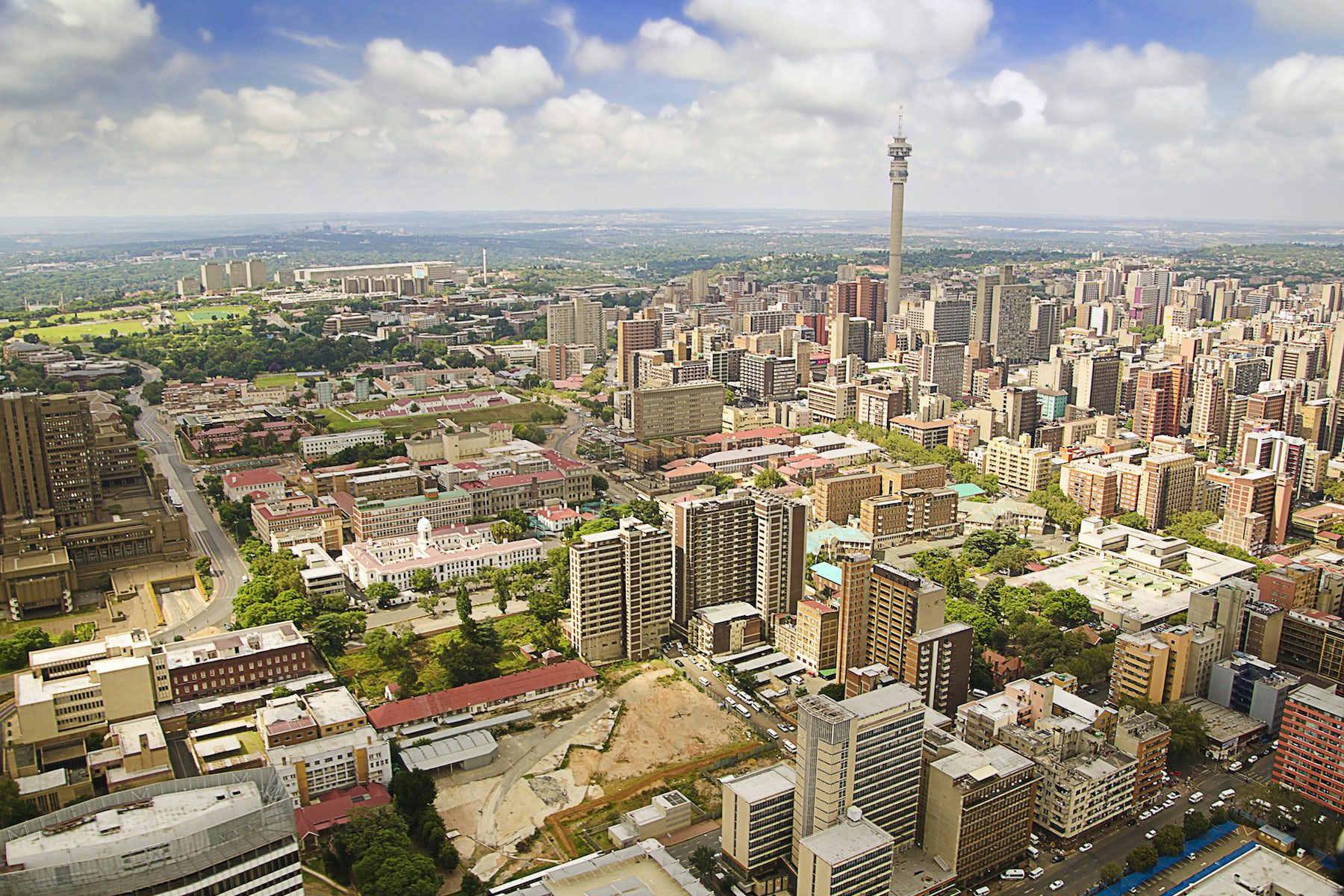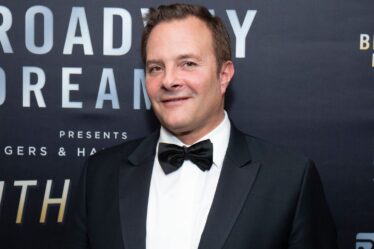
JOHANNESBURG, South Africa — When Khanyi Dhlomo opened a plush designer boutique here late last year, it revealed as much about the national psyche as it did about the local fashion industry. As South Africa’s first black television news anchor and the former editor of a popular women’s magazine, Dhlomo was the kind of elegant, self-made, high-profile entrepreneur who many believed could fill a lucrative gap in the city’s retail mix.
From mutinous McQueen handbags to lacy frocks by Baby Dior, Dhlomo’s store Luminance instantly brought a fresh point of view to the top tier of the imported fashion market. A few other pioneering boutiques like Callaghan Collezioni and Grays had loyally served the South African elite over the years, but new retail destinations in a multibrand format were rare in Johannesburg. So, on opening night, the suave interiors and white-gloved service at Luminance duly impressed new and old money alike.
But it didn’t take long for a few outspoken critics to drown out the chorus of well-wishers. Central to the dispute was whether it was appropriate for a retailer of luxury fashion like Luminance to accept a loan of 34 million rand (USD $3 million) from the country’s National Empowerment Fund – a government institution established to help boost broad-based black economic empowerment in South Africa.
Though Dhlomo soon repaid the loan by finding alternative finance, what the controversy seemed to provide was an all-too-familiar debate where the subtext was yet again about race, economic inequality and political privilege. What it also showed, however, was that some of those weighing in from different sides of the race and class divide had unexpected and unpredictable opinions.
South Africa’s great debate may not have changed much over the years but the framework around it certainly had. In other words, for businesswomen like Dhlomo, perhaps it wasn’t quite ‘business as usual’ after all.
A Work in Progress
In the span of two short decades, South Africa has transformed itself from a pariah state under apartheid to a stylish powerhouse luring talent and investment from around the African continent and beyond. Fashion is just one of many sectors that has benefitted from the remarkable economic growth and social progress made by the country in the years since the birth of the Rainbow Nation.
While the once thriving garment and textile industry has gradually declined in the face of competition from the Far East, the domestic design scene is flourishing from quirky Joburg districts like Braamfontein and Maboneng to Capetonian retailers like Mungo & Jemima and Mememe. There is greater consumer choice for fashion at a variety of price points and from around the world than ever before and, arguably, many more international business opportunities too.
So why do some observers sense that the South African fashion market — like other sectors of the economy — may still be punching below its weight?
“It’s important to remember that post 1994, South Africa had to reinvent itself as a nation and find a new identity. So this is all still a work in progress,” says Lucilla Booyzen, the founder and director of South African Fashion Week, which began 17 years ago with 17 designers and now shows around 45. “The industry is still in its infancy and finding its feet, but it is a very determined baby that won’t stand back for anything.”
And that includes a sputtering economy. GDP growth stood at a modest 1.9% last year and forecasts for this year are slightly lower. It is a far cry from the double digit growth enjoyed by many of its African neighbours or indeed its own much higher figures from a decade earlier. But South Africa is the continent’s most advanced economy and, as such, it measures growth from higher base rates than its neighbours. It is also prone to problems that can afflict advanced economies, like a possible credit bubble that some economists believe might derail the country’s recent progress or even push it into recession.
“The South African economy is flat at the moment,” concedes the editor of the South African edition of GQ magazine, Craig Tyson. “This is partly linked to global factors, but the government has shown no will or ability to support the local fashion industry. Some manufacturers have started relocating to Mauritius where conditions are more advantageous. The business mood here is guarded, I would say.”
At the same time, South Africa suffers from problems endemic to developing world economies, like achingly high levels of inequality, poverty and unemployment. Nevertheless, according to a report by professional services firm PwC, by 2016, about 11 million South African households are expected to have an annual income above 89,500 rand (or US$10,000), which constitutes a market size for consumer goods that few global brands can afford to ignore.
Indeed, megabrands like Louis Vuitton, Gucci and Burberry have been planting flags in Cape Town and Johannesburg in recent years, mostly through accessories-only stores in a few upmarket malls like V&A Waterfront, Cavendish Square and Sandton City, although other luxury brands such as Prada, Chanel and Hermès are conspicuously absent. More affordable jeans and sportswear imports include Mango, Diesel, Gap and Lacoste, which are scattered around the country in malls in cities like Durban, Bloemfontein, Port Elizabeth, East London and Polokwane.
The outlook is bright for global brands that can overcome the many logistical, social and political challenges that South Africa presents. It is estimated that the country’s apparel and footwear market is currently worth $15.6 billion, but, in just four years time, Euromonitor projects that the size of the South African market will swell by $6 billion more. The ready-to-wear designer slice of the market will grow during the same period, from $400 million this year to $600 million in 2018.
Although much of the country’s wealth still remains in the hands of the white minority, the momentum of the rising black middle and upper classes has been not only an essential social improvement; it has also been an important driver for the economy. It is this demographic change that is quite literally changing the face of the fashion business in the country at the moment and creating much of the dynamic atmosphere felt by local players.
“Woolworths targets the ‘LSM 8-10’ band [the highest ‘living standards measure’ in the country], who are typically the middle to upper income customers. Soon, half of the customers in this band — which constituted more than 9 million people last year — will be black. These are the customers of the future who typically spend four times more than a ‘LSM 6’ family on clothing and footwear per year,” says Paula Disberry, Woolworths’ group director of retail operations.
Regional Clout
Founded in Cape Town in 1931, Woolworths is one of South Africa’s largest fashion retail chains with over 400 stores. It is also a leader in the regional consolidation of the fashion business in the Southern Hemisphere and on the African continent, helping to make South Africa a bigger player than it may seem. Its holding company has acquired one of the biggest fashion retailers in Australia and New Zealand, the contemporary chain Country Road, which includes brands Witchery and Mimco, as well as one of Australia’s oldest and largest upmarket department store groups, David Jones.
The merger gives the South African group $5.7 billion in annual sales and enough buying power to help it rival the likes of multinationals Zara, Topshop and Uniqlo, which have been expanding rapidly into the country. The deal also highlights an important fact about broader market dynamics in a hemisphere where the seasonality of clothes presents challenges for brands from Europe and North America, since summer and winter fall at opposing times of the year.
“In South African retail, we always seem to be behind the Northern hemisphere. But with a focus on quick response and fast fashion, we could in fact be ahead of the Northern hemisphere retail stores. Already, the online retailer Spree.co.za, and the traditional retailer, Egality, work with this model, and have an eight week turnaround from styling to in-store,” says Anita Stanbury, CEO of the recently formed South African National Fashion Council (SANFC).
Through companies like Woolworths, investment in the South African fashion industry offers the potential of profits on a scale larger than its own domestic market of 53 million people. In addition to increased access and market share in Australasian markets, South African department stores and fashion chains are expanding fast around neighbouring and English-speaking countries in Africa.
Woolworths is present in 11 other African countries, while Stuttafords, Edgars, Truworths and Mr Price have a strong presence in the major cities of Southern African nations like Botswana, Mozambique, Namibia, Zambia and Tanzania. Seen together as part of the wider Southern African Development Community market, South Africa is a launching pad and business hub for over 250 million people.
“I think South Africa is already the fashion hub for sub-Saharan Africa and will continue to grow from strength to strength. We’re seeing an increasing number of shoppers from our neighbouring countries,” says Hanneli Rupert, the entrepreneur behind the African design concept shop Merchants on Long, located in Cape Town, and ethical luxury handbag brand Okapi.
“They particularly like to buy the top African local brands as this is something that’s unique to our shopping environment… I haven’t specifically seen or heard of the Lesotho or Swazi royals shopping conspicuously in South Africa but I am getting ‘By Appointment to the King of the Tembe,” amongst others, for Okapi,” she says.
Domestic Dynamism
South Africa finds itself in a unique position among African nations. In terms of wealthy consumers in the country, South Africa has twice as many as Egypt and three times as many as Nigeria. There are currently about 49,000 high-net worth individuals (those with net assets of US $1 million or more) living in South Africa, according to intelligence provider New World Wealth. Andrew Amoils, a senior analyst at the firm, estimates that 16% of these are from previously disadvantaged backgrounds.
What’s more, the number of South African millionaires is expected to nearly double by 2030, with a significant number of these high earners expected to tap into the growing South African designer market that has flourished at fashion weeks in Cape Town and Johannesburg over the years.
“With 11 official languages in this country alone, knowledge of the consumer is an important factor,” says the SANFC’s Anita Stanbury. Although many South African fashion brands are cosmopolitan enough to cross-over into the global marketplace, some produce ranges or special items that reinterpret elements of traditional design celebrating Zulu, Xhosa, Afrikaner or other South African cultural identities. Many politicians, actresses, musicians and other high profile figures in the country have been avid supporters of brands like these, prompting a greater interest from the buying public.
“Successful, well established designers like Marianne Fassler, Clive Rundle and Black Coffee are starting to see a renaissance. Kluk Cgdt, David Tlale, Hendrik Vermeulen Couture, Thula Sindi and Stefania Morland are all higher end designers and it’s very exciting that we’re starting to see them achieve higher volumes of product, with some export orders to European and American markets. There are also a whole host of new generation, up and coming designers,” says Anita Stanbury, who highlights Joel Janse Van Vuuren, Avant Apparel and MaXhosa by Laduma as among those to watch.
The enthusiasm held by local industry leaders like Emilie Gambade, the editor-in-chief of Elle South Africa, is typical of the close-knit community that has created complementary initiatives and support networks for South African designers. “In 2000, we launched the Elle Rising Star Award in partnership with Mr Price, around a desire to find new talents in the fashion industry. It’s been the launch pad for many a young-but-now-famous designer’s career. David Tlale, Anisa Mpungwe, Chloe Mutton, Tiaan Nagel, Sindiso Khumalo, Nicholas Coutts are among them.”
The problem, she suggests, is that passions have often run too high among rival interests. “Fashion week here is and remains a headache. Without any official organisation to overlook and coordinate the tango of shows or even decide on the industry’s standards, designers present their collections at two separate events, sometimes at a week’s difference. The irony is that both fashion weeks’ organisers bring something invaluable,” Gambade explains, referring to the work of Precious Moloi-Motsepe of African Fashion International Mercedes-Benz Fashion Week and Lucilla Booyzen of South African Fashion Week.
The exceptionally competitive nature of the market extends to international players, where a few key local partners like Surtee Group, Edcon and Apsley Group vie for franchise and joint-venture deals.
“Although the fashion retail landscape is not very well developed in South Africa, retailers cannot underestimate the South African consumer. Don’t expect them to be grateful for second rate product, or for being overcharged,” says Stanbury, referring to prices for international products that can be inflated by 45 percent because of import taxes.
“Even high-end international brands are often held hostage by the licensee, with brand integrity at stake, due to the unavailability of sizes, stock and customer service. The ‘fun stuff’ is not available in South African stores, as retailers send slow-selling Northern Hemisphere stock, or ‘safe stock’ here. Thank goodness for e-commerce,” she says.
Elle magazine’s Gambade believes that this is where the country’s next generation of local fashion entrepreneurs can truly excel, transforming South Africa’s isolation from a disadvantage into an opportunity. She points to Samuel Mensah and Danica Lepen, the duo behind Kisua.com, which she calls “a clever fusion of an African fashion e-store and a design and manufacturing platform” and Dolapo Shobanjo, the founder of MyAsho.com, an exciting pan-African designer platform.
GQ’s editor Craig Tyson agrees: “The most successful mulitibrand retailer of local fashion is the online retailer Spree, owned by the media giant Naspers which is one of the largest in the world now. Another is Superbalist, recently amalgamated with Take-a-lot.com. What really bodes well for the industry’s future is that South Africa has a vigorous technology and start-up entrepreneurial sector. I think this represents the best opportunity for South African fashion to grow.”
Editor’s Note: This article was revised on 11 December, 2014. An previous version of this article misstated that Dolapo Shobanjo, founder of MyAsho.com, was South African. She is not. Dolapo Shobanjo is Nigerian.



